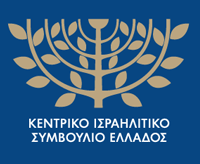THE JEWISH COMMUNITY OF COMOTINI
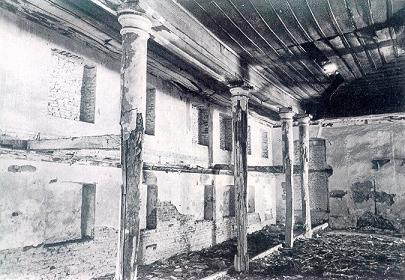
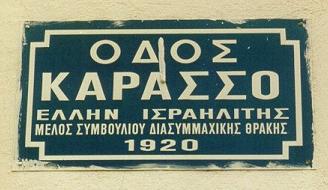 There is little historical evidence for the first settlement of Jews in Komotini. Aristophanes' work "Acharnis" mentions envoys of the king of Thrace Sitalkis in Athens, who, as ancient commentaries explain, are Jews (Acharnis, f. 162, schol.1, ed. Fexis). On the other hand, the presence of a Jewish element in the area is confirmed by inscriptions found in the ancient city of Maroneia, which is 30 kilometers from Komotini.
There is little historical evidence for the first settlement of Jews in Komotini. Aristophanes' work "Acharnis" mentions envoys of the king of Thrace Sitalkis in Athens, who, as ancient commentaries explain, are Jews (Acharnis, f. 162, schol.1, ed. Fexis). On the other hand, the presence of a Jewish element in the area is confirmed by inscriptions found in the ancient city of Maroneia, which is 30 kilometers from Komotini.
During the 16th century the Israelite Community of Komotini, having received immigrants from Adrianople and Thessaloniki, is composed mainly of Sephardic Jews, in contrast to the Communities of the other Thracian cities which are Romaniotic.
Until the 18th century the Jews of Komotini developed the textile, silk and wool trade and later the tobacco industry. The Jewish quarter was located next to the city walls (today's Fortress) and the synagogue there was built in the 18th century. in today's Emperor Theodosiou square.
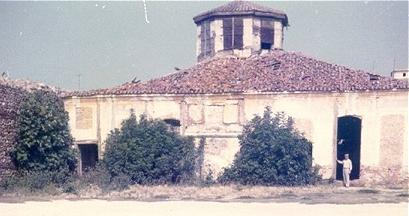 At the beginning of 1900 the Community numbered 1200 Jews. In 1910, the Alliance Israelite Universelle School began operating in Komotini, where Greek, French and Hebrew were taught. The population of the Jewish Community decreased during the Balkan Wars (1912 - ΄13), as its members settled in Thessaloniki, Constantinople, etc.
At the beginning of 1900 the Community numbered 1200 Jews. In 1910, the Alliance Israelite Universelle School began operating in Komotini, where Greek, French and Hebrew were taught. The population of the Jewish Community decreased during the Balkan Wars (1912 - ΄13), as its members settled in Thessaloniki, Constantinople, etc.
The Jews of Komotini, who have always lived harmoniously and created bonds of friendship with their fellow citizens, welcomed the liberation of the city from the Greek Army in 1919. The spirit of cooperation began from the first moment that the Ninth Greek Division, together with the French Troops settled in the city in October 1919, so the houses of the Israelis were considered the most suitable and accommodated the Greek and French officers. When, in May 1920, the Greek Army remained permanently in the city, this cooperation not only continued but turned into a real friendship, above all when the League of Nations-appointed president of the Committee for the Rehabilitation of Refugees, Henry Morgenthau, arrived in Komotini. who, due to his Jewish origin, was hosted by the Jewish Community.
 During this period, the Jewish Community also maintained a cultural club, charitable associations, youth and women's organizations, such as the "Ahdut" youth music and gymnastics club, with a notable participation in the cultural and intellectual activity of the city, and with theatrical performances of Rakina's works translated into Greek "Esther" and "Athalia", the charity fund "Avadim", which provided food and clothing to the needy. From the funds of this fund, the Community Club was created, which was built on a plot of land next to the Jewish school.
During this period, the Jewish Community also maintained a cultural club, charitable associations, youth and women's organizations, such as the "Ahdut" youth music and gymnastics club, with a notable participation in the cultural and intellectual activity of the city, and with theatrical performances of Rakina's works translated into Greek "Esther" and "Athalia", the charity fund "Avadim", which provided food and clothing to the needy. From the funds of this fund, the Community Club was created, which was built on a plot of land next to the Jewish school.
OCCUPATION
During World War II, Komotini was occupied by the Bulgarians, collaborators of the Nazis. On the night of March 3-4, 1943, the Bulgarians arrested the 819 Jews of the city and - within the same operation of arresting the Jews of North Macedonia and Thrace - deported them to the Treblinka camp, where they were exterminated. Only 28 survived the Holocaust.
POST-WAR
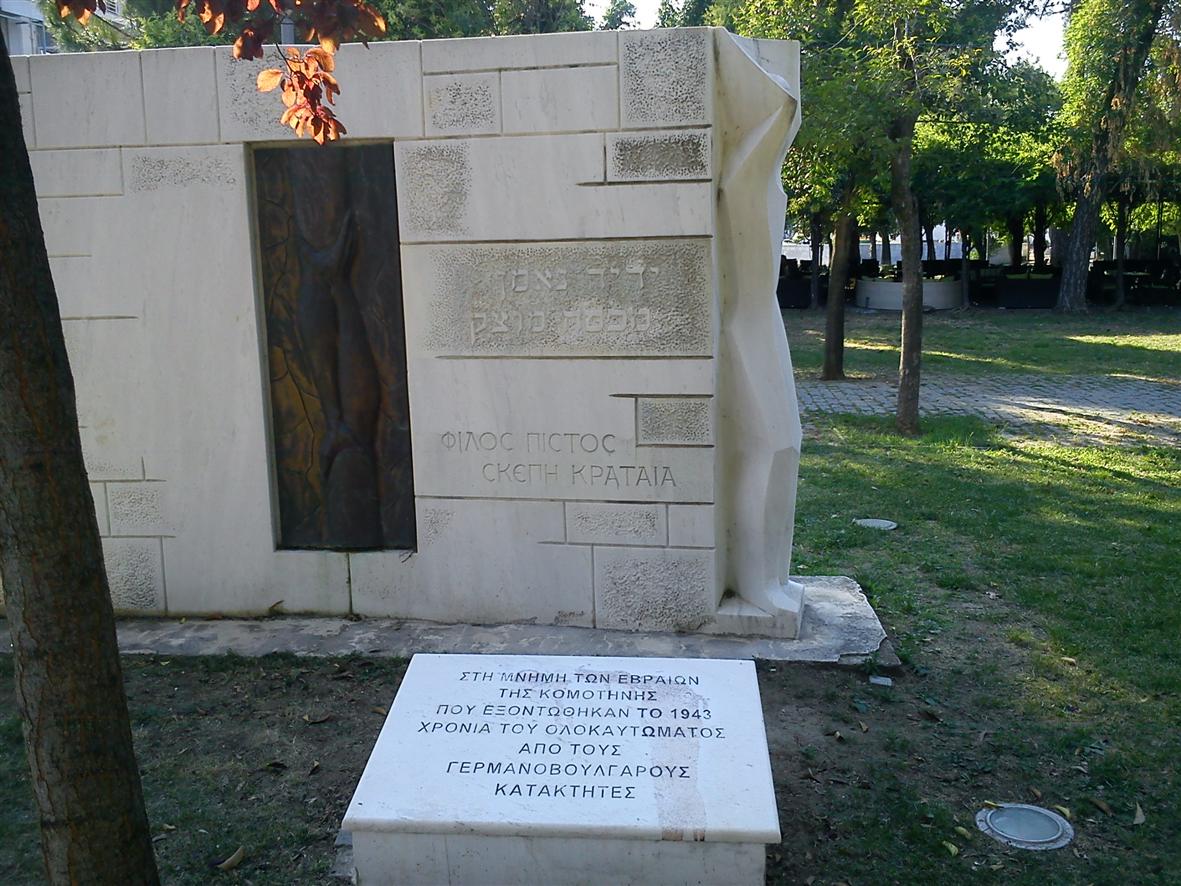
Its dome dominated the area, while inside it was characterized by a series of columns that supported the roof in a circle. A separate door led to the women's room. The Vima was placed in the center, under the dome, while the Echal (the Sanctuary where the Torah scrolls were kept), was located on the eastern wall of the building. Nothing could be saved after the devastating War.
The Jewish Community of Komotini was officially dissolved in 1958 due to a lack of members.
In 2004, the Municipality placed in the Municipal Park of Agia Paraskevi a Memorial dedicated to the victims of the Holocaust.
